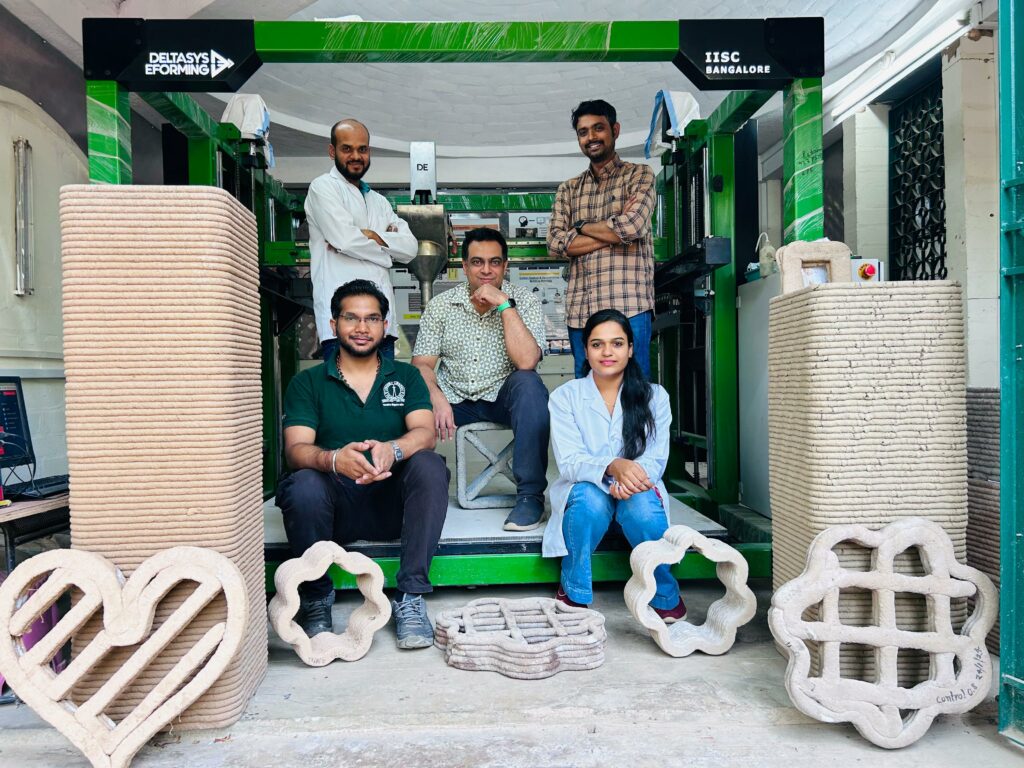Explore the latest news in Additive Manufacturing with AM Chronicle’s round up of Week 14 of 2024.
The round up of last week includes developed of sand substitute using 3D printing by research team at IISC Bangalore; IIT Guwahati partners with Stryker Corp; Wohlers Associates report shows 24.4% growth rate for Metal AM in 2024; U.S. Army Corps of Engineers produced USA’s largest 12-foot-long metal part for the ship arrestor system and much more.
IISC Researchers develop sand substitute and 3D printed material for eco-friendly construction
In a more recent study, Gupta’s team checked to see what happens when carbon dioxide is sequestered in excavated soil to develop cement-lime-soil materials, which are then used to replace up to 25% and 50% of fine aggregates by mass in mortar.
The team has also developed 3D-printable materials made of excavated soil stabilised with a combination of binders like Portland cement, blast furnace slag (a granular calcium-silicate byproduct) and fly ash.

In a stride towards advancing biomedical technology, the Indian Institute of Technology Guwahati (IIT Guwahati) has inked a Memorandum of Understanding (MoU) with Stryker Corporation, a leading American multinational medical technology company headquartered in Kalamazoo, Michigan.
Wohlers Associates Shows Metal Additive Manufacturing Growth of 24.4% in New Report
Wohlers Associates, powered by ASTM International, has announced Wohlers Report 2024. The report, published for 29 consecutive years, provides organizations worldwide with detailed guidance, perspective, and research results on the additive manufacturing (AM) and 3D printing industry.

The 28th Maintenance Group’s Additive Manufacturing Flight became the first field-level unit to utilize the new Mobile Cold Spray System at Ellsworth Air Base, South Dakota, March 27, 2024. This system is designed to enhance and streamline preventative maintenance of Department of Defense aircraft components.
Frankenstein design’ enables 3D printed neutron collimator
The time-tested strategy of “divide and conquer” took on a new, high-tech meaning during neutron experiments by scientists at the Department of Energy’s Oak Ridge National Laboratory. They discovered that the problems they faced while attempting to 3D print a one-piece collimator could be solved by instead developing a “Frankenstein design” involving multiple body parts—and some rather obvious scars.
Researchers Produce Grafts that Replicate the Human Ear
Using state-of-the-art tissue engineering techniques and a 3D printer, researchers at Weill Cornell Medicine and Cornell Engineering have assembled a replica of an adult human ear that looks and feels natural.
How 3D-printed beehives made of fungus can help protect pollinators
In the EU-funded HIVEOPOLIS project, scientists working in Belgium, Bulgaria, Germany, Latvia and Switzerland collaborated on a series of hives complete with digital technologies to help monitor and manage honeybee populations.
In early March, the USACE Detroit District installed the largest U.S. civil works infrastructure component produced by a 3D printer – a 12-foot-long metal part for the ship arrestor system on the Poe Lock, one of the two active locks on the Soo Locks facility.
Subscribe to AM Chronicle Newsletter to stay connected: https://bit.ly/3fBZ1mP
Follow us on LinkedIn: https://bit.ly/3IjhrFq
Visit for more interesting content on additive manufacturing: https://amchronicle.com


